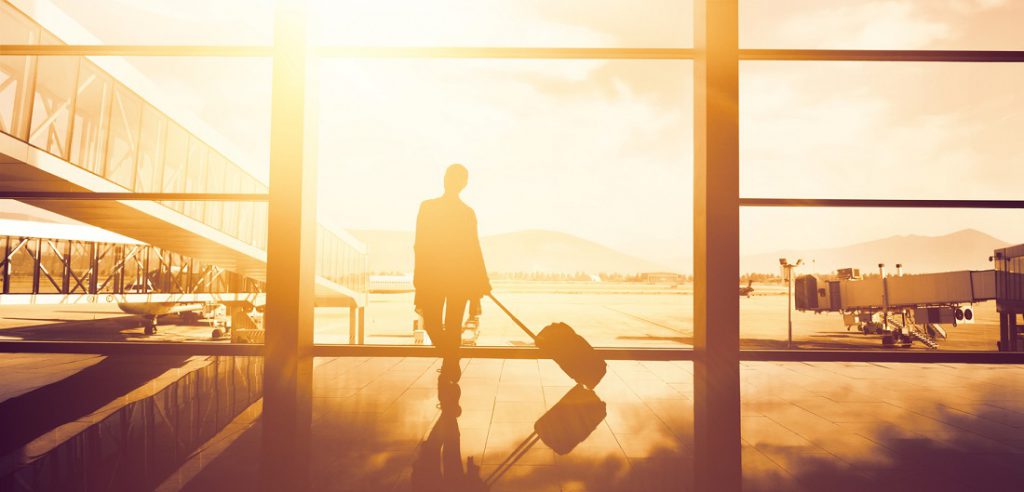My sister, Heather, is a free spirit. She loves to travel and is always up for an adventure, so we weren’t all that surprised when she signed up for the Peace Corps following college graduation. Her assignment: to serve as an education volunteer in a small village in Zambia. Heather lived in a thatch-roof hut with no electricity, no running water and no cell phone service. While I could never quite imagine a two-year stay in this setting, I decided I could survive a two-month visit so I packed my bags and planned my own African adventure. While I mapped out my itinerary and pored over my Lonely Planet books and online travel blogs, one thing became evident – I needed to do some serious health planning.
Following a round of vaccinations and a long explanation of malaria medication, my doctor asked, “and sun protection, what do you plan to do about that?” I snickered and replied, “wear sunscreen, of course.” As someone with a light skin tone, I knew all about sun protection (or at least I thought I did). I am the one who sleeps under the blanket at the beach. Thankfully, my doctor was quick to challenge me and explain that this wasn’t the type of sun I was used to here in New York. I walked away from that appointment with a new-found fear of mosquitos and a better understanding of why I was at greater risk of skin damage during sunny vacations in Sub-Saharan Africa or even much closer to home in Florida or the Caribbean.

My sister’s humble abode
Since it’s officially spring break season, I wanted to share some of the important lessons I learned about sun protection when traveling to sunny destinations:
Location makes a big difference. Countries that are located close to the equator offer high temperatures year-round which make them perfect for winter and spring getaways. In these regions, however, the sun’s rays hit the earth at a more direct angle and aren’t as well-absorbed by the atmosphere; this can mean stronger UV radiation which can be even more damaging to your skin than the sun you are used to.
Intense bouts of sun after extended time indoors are especially dangerous. I commenced my travels after a long semester where I spent most of my time indoors. I went from finals week inside the library to extreme exposure, spending hours outside on a safari excursion in Botswana and cycling in between village schools in Zambia. This type of intense exposure, after spending extended time indoors, is especially hazardous and has been linked to melanoma. UV radiation from the sun also plays a crucial role in the development of nonmelanoma skin cancers. In fact, about 90 percent of nonmelanoma skin cancers are associated with exposure to the sun’s UV rays.

One of the few shady spots in the village – the well!
Sunscreen isn’t enough. During humid NYC summers, I often run errands in a sun hat, sunglasses, a t-shirt, and shorts. Combined with sunscreen and a concerted effort to walk on the shadier side of the street, my skin is adequately protected. I quickly learned, however, that I couldn’t do the same during my travels. I had to wear a wide-brimmed hat, long pants and long sleeves and reapply sunscreen to exposed areas more regularly. My sister also carried an umbrella on our outings because shade wasn’t always easy to find.
Your sun sensitivity may be dependent on other factors. In my case, I had to take malaria pills before, during and after my trip. My doctor warned that this medication would lead to photosensitivity, causing my skin to burn in less time and with a lower level of sun exposure than normal. While your travel destination may not require you to take malaria medication, there are some common medications that may also increase photosensitivity; these include some antibiotics (Tetracylines, Fluoroquinolones, Sulfonamides), NSAIDs (Ibuprofen, Ketoprofen, Naproxen), diuretics (Furosemide, Hydroxychloroquine), and oral and topical retinoids (Isotretinoin, Acitretin, Tazarotene, Tretinoin). Be sure to consult your doctor before your trip to understand whether you’re at risk for drug-induced photosensitivity.

We took a lot of “shade and sunscreen breaks” when cycling from village to village.
While my African adventure wasn’t exactly a luxurious vacation, I can say without hesitation that it was the trip of a lifetime. I got to experience so many different cultures, meet incredible people, master the art of pumping water from a well and learn how to protect my skin in the sunniest of climates.





